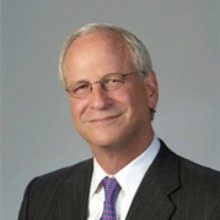
Common Developing Others Challenge:
Formal promotions are scarce in today’s uncertain business environment and at the higher organizational levels; yet high performers require external validation and continual new challenges to feel their career is on track. In addition to exhibiting intelligence, dedication, passion, and excellent judgment skills, they are usually also characterized by rapid advancement. This is often solely defined as a formal promotion to the next level, but there are two other types of ‘promotions’ available. Consciously tapping into them is critical to keeping your best people.
The Solution:
Create a leadership succession plan that takes into account and details informal as well as formal promotion opportunities. While the tendency is to focus on rising up the organizational ladder through a new job with higher pay and perks, these two other types of informal ‘promotions’ are often overlooked and can also justify a pay increase:
Expert Potential: Here an employee can be asked to do more complex tasks which bring their technical skills and knowledge into play. If possible, also encourage them to do some work on pet projects they feel strongly about and that might make future contributions to your organization. This also provides a path for them to motivate their people.
Growth Potential: In this instance, an employee can be given a more prestigious and larger size project or area of responsibility to oversee without changing their title. Ideally it will be one that allows them to also work across silos in the organization so they can continue to develop their leadership skills, vision and focus. It should NOT be more work with no increase in pay, since a leader’s job is to obtain resources for their people, not just ask more of them.
Since intrinsic satisfaction is equally important, make sure you know and are meeting the real career desires of your high performers by discussing with them why they come to work each day and crafting a long term program that meets both their intrinsic as well as financial needs. The combination provides your high performers with an upward career progression and the fulfillment of their individual passions — which leads to higher job satisfaction.
The Thought Process:
Show your employees that you are actively looking out for them, including showing them how they are aligned with the future of your organization. Doing so builds your senior leadership credibility and increases the bench strength which is critical to your company’s future success. Make sure your key people continue to learn and remember to model the importance of learning and to be there to actively coach and mentor them.
If you are not paying sufficient attention to them, your competition will!
Think Differently to Act More Powerfully!
Read Berson’s previous column Mastering Relationship Building on WashingtonExec.
Alan Berson is an author, keynote speaker, executive coach, Learning Director at Wharton Executive Education and the CEO of Leadership Conversation LLC based in Potomac, MD. His recent book, LEADERSHIP CONVERSATIONS: Challenging High-Potential Managers to Become Great Leaders, was released by Jossey-Bass in March of this year and was named as one of the top 10 management/leadership books by Amazon.com. An extensive review can be found at Knowledge@Wharton.


